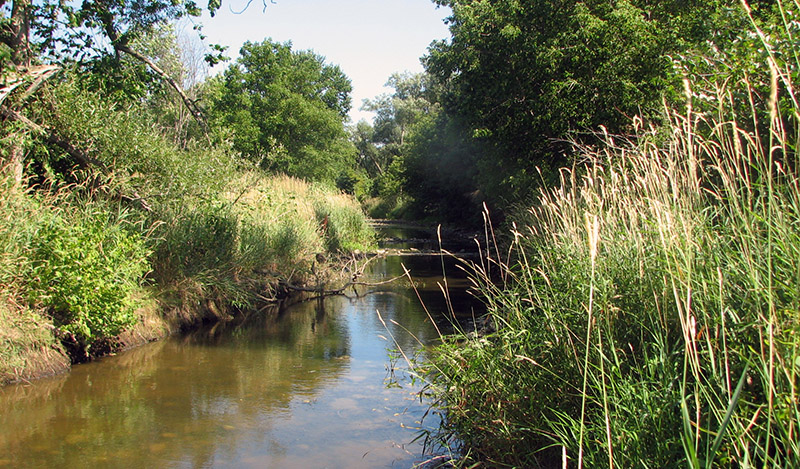Upper Thames watershed experiencing dry spring (UTRCA weekly, May 28, 2021)
May 28, 2021 – On May 11, the Upper Thames River Conservation Authority (UTRCA) issued a media release indicating that the watershed is experiencing Level 1 Low Water conditions, according to the UTR Low Water Response Team. The Level 1 advisory is part of a three-tiered system used in Ontario to inform the public of local low water conditions.
“We evaluate low water conditions by looking at several indicators, including precipitation and stream flows,” said Mark Helsten, UTRCA Senior Water Resources Engineer.
The watershed received an average of 51 mm of precipitation in April, which is about 61% of the long term normal for that month. Precipitation from February to April was only 46% of normal for that time period.

Stream flows across the watershed are also below normal for this time of the year, and that’s affecting water levels in some UTRCA reservoirs. The Conservation Authority maintains three large reservoirs and several smaller ones across the watershed. Two of the large reservoirs – Pittock and Wildwood – provide flow augmentation in the summer as well as flood control year round.
“We hold back some of the spring runoff to raise the reservoirs to their target summer elevations,” said Mark. “This year, Wildwood Reservoir is still about one metre below its target summer level, but we’ve been able to fill Pittock Reservoir and hopefully we can maintain it at that elevation until mid-June when we begin to release water and augment flows downstream.”
Two small recreational reservoirs that are lowered in the fall and filled in the spring are RT Orr Reservoir in Stratford and Mitchell Reservoir in Mitchell. RT Orr Reservoir was filled earlier this season and reached its target summer level. Mitchell Reservoir is usually filled a couple weeks after Orr and has yet to be filled due to the dry conditions.
The UTRCA has 28 monitoring wells that measure groundwater levels continuously, as part of the Provincial Groundwater Monitoring Network. Data from these wells indicates that groundwater levels were lower at the end of 2020 and continue to be below normal this spring due to the lack of precipitation.
The dryness combined with the recent heat has also contributed to creating ideal conditions for European Gypsy Moth, an invasive species, to thrive. The first hatches of this year’s Gypsy Moth larvae were seen in London on April 29. Karen Pugh, Resource Specialist at UTRCA shared that, “The Gypsy Moths are enjoying this hot, dry weather. We are hearing from landowners that these forest pests are very present.” During the winter, UTRCA staff manually removed thousands of egg masses in several of London’s Environmentally Significant Areas as well as at Wildwood and Pittock Conservation Areas.
Landowners are encouraged to keep young trees watered during this dry weather. Trees that were planted this spring haven’t received the necessary rainfall, which makes them especially susceptible to pests such as the Gypsy Moth.
Related stories:
• Staff investigates stream water quality
• Water Resource Technicians measure different levels of flow

